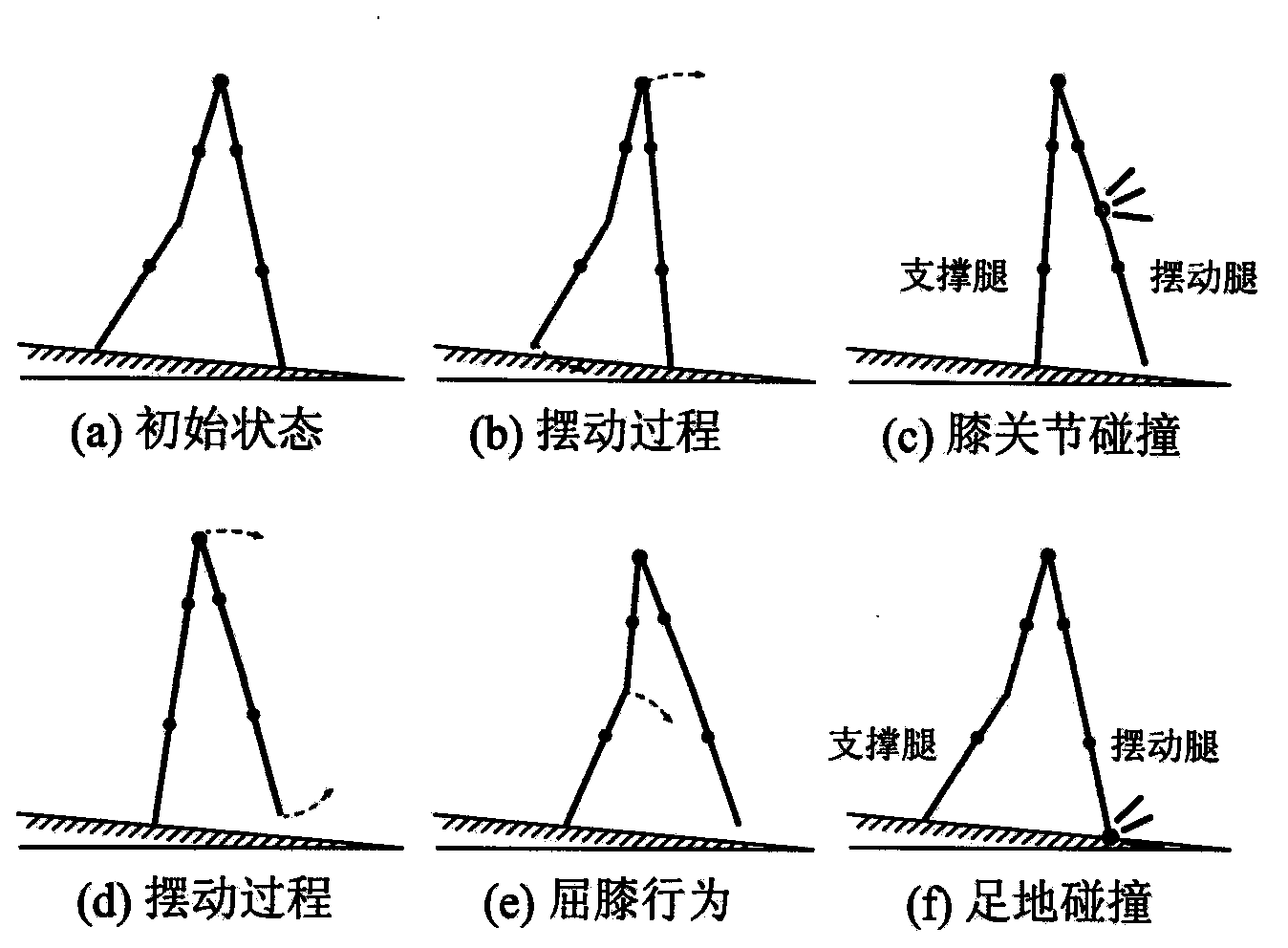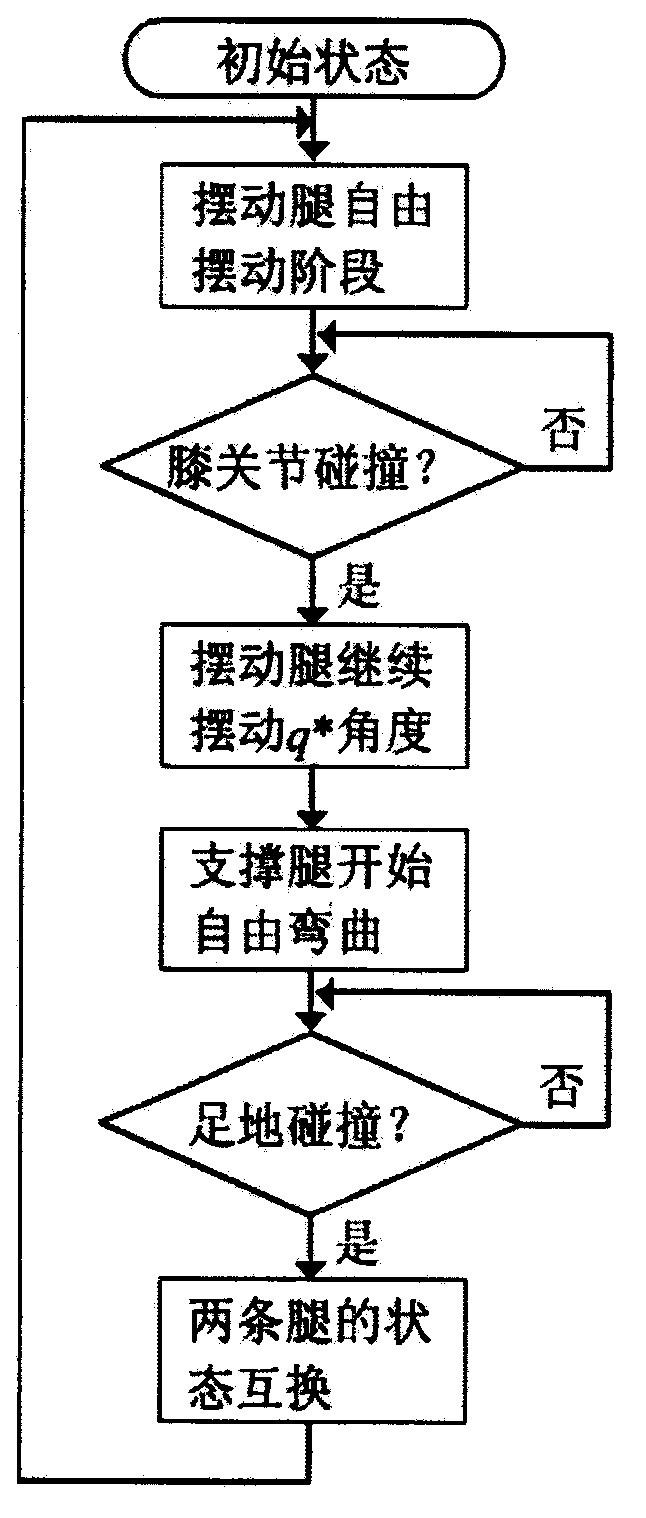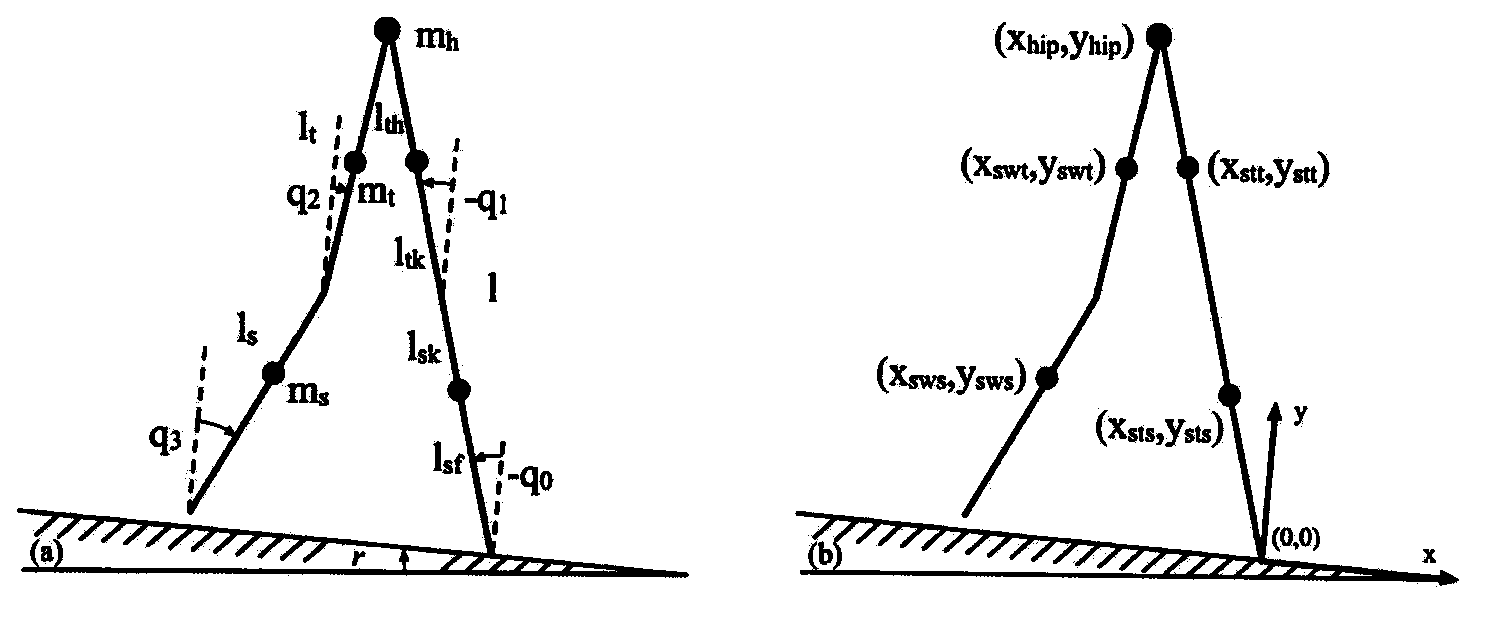Double-feet passive walking state control method with knee bending behavior
A gait control and behavior technology, which is applied in the fields of motor vehicles, transportation and packaging, etc., can solve the problems of high energy consumption, poor inherent stability of robots, and low control efficiency, so as to increase the range of slopes, improve the ability to walk on slopes, and The effect of stability
- Summary
- Abstract
- Description
- Claims
- Application Information
AI Technical Summary
Problems solved by technology
Method used
Image
Examples
Embodiment
[0026] A biped passive walking gait control method with knee-bending behavior, the method passes such as image 3 The five-mass-point four-rod walking model shown is realized. The five mass points are the centers of mass of the hip joint, two thighs and two calves, which characterize the mass distribution of the model. The four rods are two thighs and two calves, and the thighs are The hip joint is connected, and the lower leg is connected to the thigh through the knee joint to form a swing leg and a support leg. The state of the walking model can be expressed as: In the formula, q 0 ,q 1 ,q 2 ,q 3 are the included angles of the supporting leg calf, supporting leg thigh, swinging leg thigh, and swinging leg calf relative to the normal of the walking slope.
[0027] The entire control process is as figure 1 and figure 2 As shown, it specifically includes the following steps:
[0028] The first step, the initial state, such as figure 1 (a): The moment when the swingin...
PUM
 Login to View More
Login to View More Abstract
Description
Claims
Application Information
 Login to View More
Login to View More - R&D
- Intellectual Property
- Life Sciences
- Materials
- Tech Scout
- Unparalleled Data Quality
- Higher Quality Content
- 60% Fewer Hallucinations
Browse by: Latest US Patents, China's latest patents, Technical Efficacy Thesaurus, Application Domain, Technology Topic, Popular Technical Reports.
© 2025 PatSnap. All rights reserved.Legal|Privacy policy|Modern Slavery Act Transparency Statement|Sitemap|About US| Contact US: help@patsnap.com



